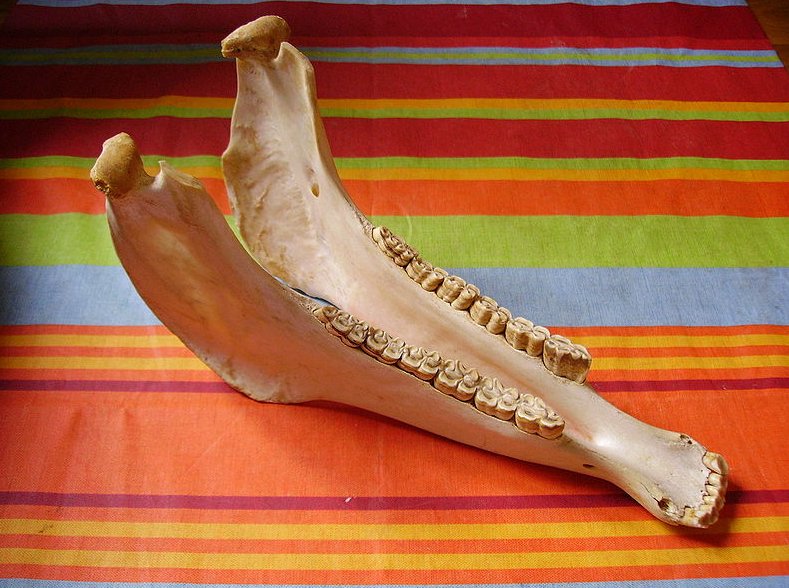9. The veterenaries are using a standard chart to count the teeth of a horse:  There are 4 * 6 = 24 teeth to chew with and in addition there are 2 * 6 = 12 to bite with. Together it makes 36, as if each tooth corresponded to 10 days. Another 4 teeth are close to those 12 in front, and 360 + 4 = 364 (or 360 + 40 = 400). But these 4 teeth are easily removed, leaving 'cups' where they had been rooted:
I guess the pair of holes in the lower jaw correspond to Hyadum I and Hyadum II. The missing teeth are named canine teeth: "By the time a horse is fully developed, usually at around five years of age, it will have between 36 and 44 teeth. All equines are heterodontous, which means that they have different shaped teeth for different purposes. All horses have twelve incisors at the front of the mouth, used primarily for cutting food, most often grass, whilst grazing. They are also used as part of a horse's attack or defence against predators, or as part of establishing social hierarchy within the herd. Immediately behind the front incisors is the interdental space, where no teeth grow from the gums. This is where the bit is placed when horses are ridden. Behind the interdental space, all horses also have twelve premolars and twelve molars, also known as cheek teeth or jaw teeth. These teeth chew food bitten off by incisors, prior to swallowing. In addition to the incisors, premolars and molars, some, but not all, horses may also have canine teeth and wolf teeth. A horse can have between zero and five canine teeth, also known as tusks (tushes for the deciduous precursor), with a clear prevalence towards male horses (stallions and geldings) who normally have a full set of four ... Between 13 and 32% of horses, split equally between male and female, also have wolf teeth, which are not related to canine teeth, but are vestigial premolars. Wolf teeth are more common on the upper jaw, and can present a problem for horses in work, as they can interfere with the bit ..." (Wikipedia) Perhaps the 4 canine teeth (extra long) motivated a comparison with the 4 extra days in the quarters (measured as 364 / 4 = 91 days). |
